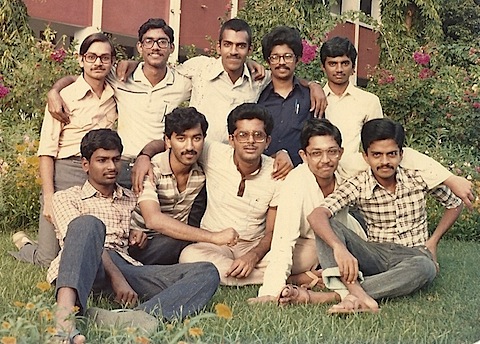For all its pretentiousness, French cuisine is pretty amazing. Sure, I’m no degustation connoisseur, but the French really know how to eat well. It is little wonder that the finest restaurants in the world are mostly French. The most pivotal aspect of a French dish usually is its delicate sauce, along with choice cuts, and, of course, inspired presentation (AKA huge plates and minuscule servings). The chefs, those artists in their tall white hats, show off their talent primarily in the subtleties of the sauce, for which knowledgeable patrons happily hand over large sums of money in those establishments, half of which are called “Cafe de Paris” or have the word “petit” in their names.
Seriously, sauce is king (to use Bollywood lingo) in French cuisine, so I found it shocking when I saw this on BBC that more and more French chefs were resorting to factory-manufactured sauces. Even the slices of boiled eggs garnishing their overpriced salads come in a cylindrical form wrapped in plastic. How could this be? How could they use mass-produced garbage and pretend to be serving up the finest gastronomical experiences?
Sure, we can see corporate and personal greed driving the policies to cut corners and use the cheapest of ingredients. But there is a small technology success story here. A few years ago, I read in the newspaper that they found fake chicken eggs in some Chinese supermarkets. They were “fresh” eggs, with shells, yolks, whites and everything. You could even make omelets with them. Imagine that — a real chicken egg probably costs only a few cents to produce. But someone could set up a manufacturing process that could churn out fake eggs cheaper than that. You have to admire the ingenuity involved — unless, of course, you have to eat those eggs.
The trouble with our times is that this unpalatable ingenuity is all pervasive. It is the norm, not the exception. We see it in tainted paints on toys, harmful garbage processed into fast food (or even fine-dining, apparently), poison in baby food, imaginative fine-print on financial papers and “EULAs”, substandard components and shoddy workmanship in critical machinery — on every facet of our modern life. Given such a backdrop, how do we know that the “organic” produce, though we pay four times as much for it, is any different from the normal produce? To put it all down to the faceless corporate greed, as most of us tend to do, is a bit simplistic. Going one step further to see our own collective greed in the corporate behavior (as I proudly did a couple of times) is also perhaps trivial. What are corporates these days, if not collections of people like you and me?
There is something deeper and more troubling in all this. I have some disjointed thoughts, and will try to write it up in an ongoing series. I suspect these thoughts of mine are going to sound similar to the luddite ones un-popularized by the infamous Unabomber. His idea was that our normal animalistic instincts of the hunter-gatherer kind are being stifled by the modern societies we have developed into. And, in his view, this unwelcome transformation and the consequent tension and stress can be countered only by an anarchical destruction of the propagators of our so-called development — namely, universities and other technology generators. Hence the bombing of innocent professors and such.
Clearly, I don’t agree with this luddite ideology, for if I did, I would have to first bomb myself! I’m nursing a far less destructive line of thought. Our technological advances and their unintended backlashes, with ever-increasing frequency and amplitude, remind me of something that fascinated my geeky mind — the phase transition between structured (laminar) and chaotic (turbulent) states in physical systems (when flow rates cross a certain threshold, for instance). Are we approaching such a threshold of phase transition in our social systems and societal structures? In my moody luddite moments, I feel certain that we are.










